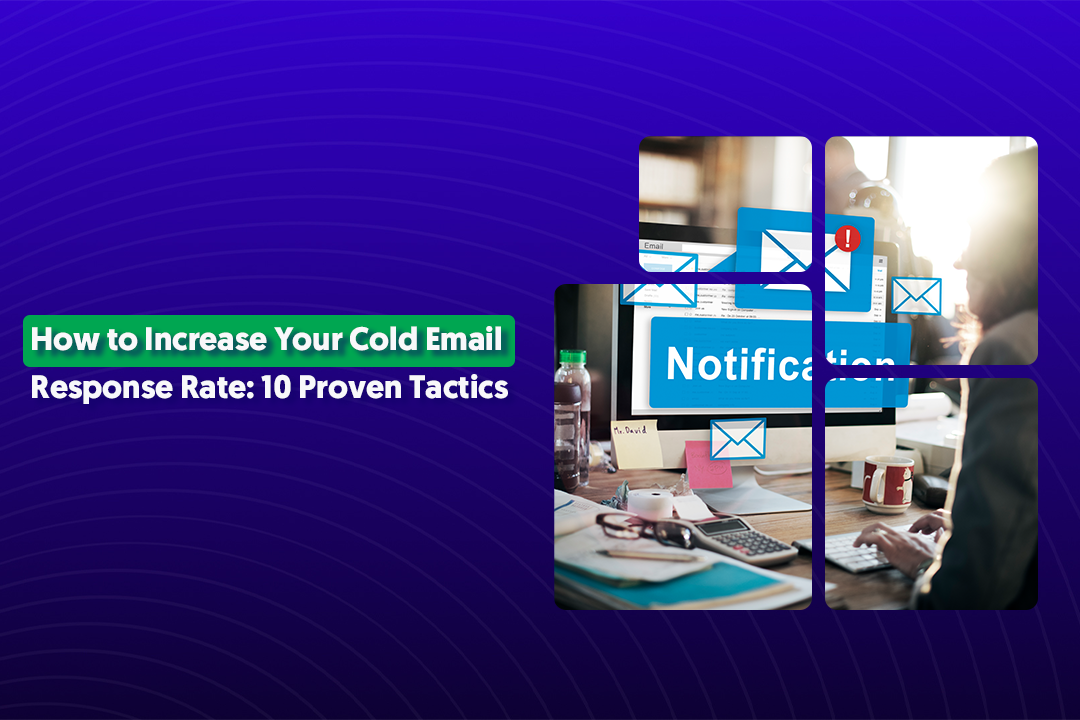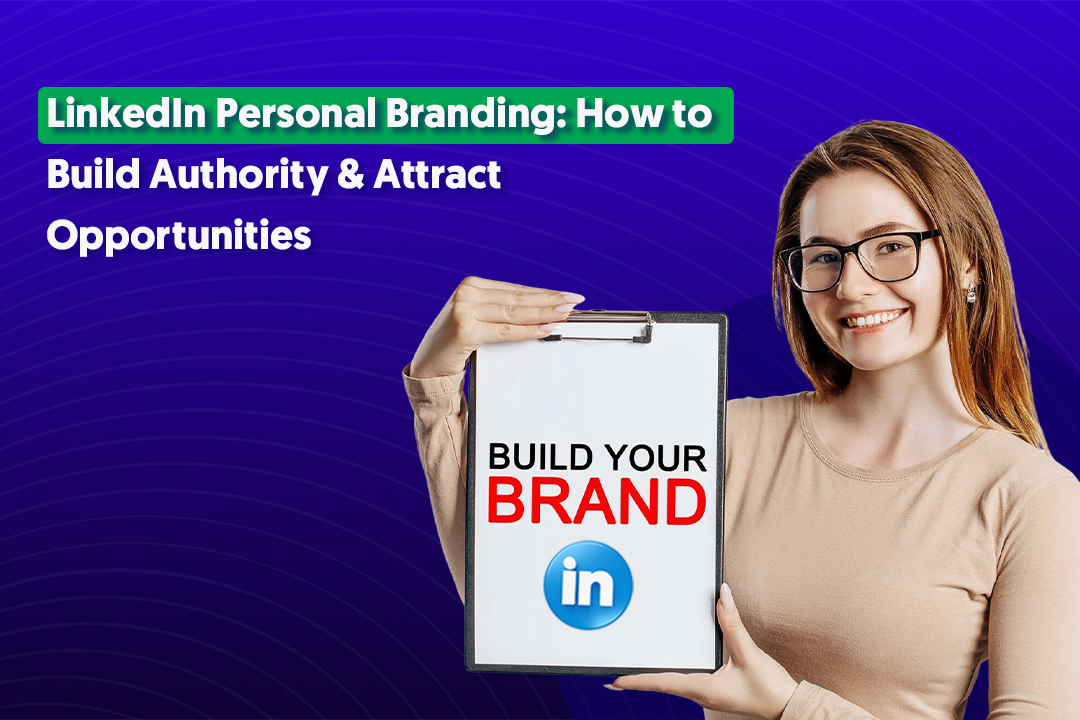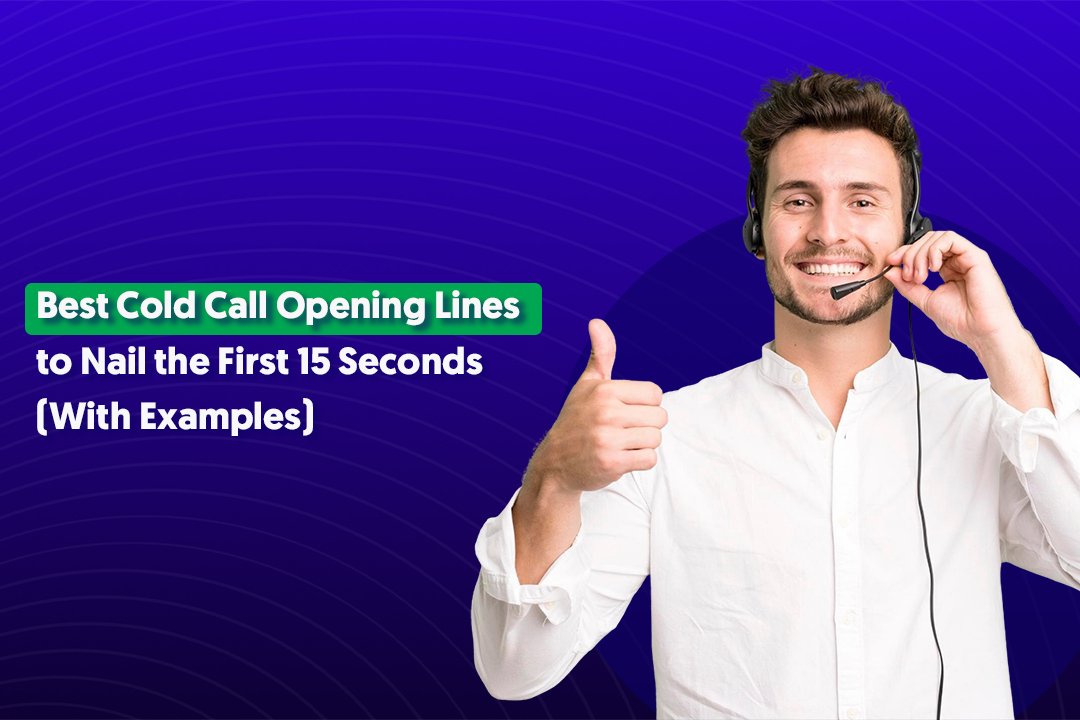Key Takeaways
- LinkedIn testimonials are trust signals that directly influence conversions.
- The best testimonials are short, specific, and results-driven—not fluffy.
- Use a 3-sentence format: context, result, and clear recommendation.
- Feature testimonials across LinkedIn profiles, websites, outreach, and sales decks.
- Ask at the right time and guide clients with structure to get quality responses.
What others say about you often matters more than what you say about yourself.
Buyers are more skeptical, attention is harder to earn, and social proof has become one of the most powerful currencies in this digital age.
That’s where testimonials come … not just anywhere, but specifically on LinkedIn.
LinkedIn isn’t just a professional networking site; it’s a credibility engine. Whether you're a consultant, freelancer, or a LinkedIn lead generation agency, having strong testimonials on your profile can tip the scales in your favor.
It's the difference between being just another service provider... and being the one people trust with their business.
When a potential client visits your LinkedIn profile or company page, testimonials immediately provide validation. They signal reliability, showcase real-world results, and often do a better job of selling your services than your pitch ever could.
Beyond that, they also help boost lead generation efforts, strengthen your personal brand, and reinforce the quality of your work, all directly on a platform where B2B decisions are made.
Here you’ll find actionable LinkedIn testimonial examples and templates that you can easily adapt. Let’s get started!
Why LinkedIn Testimonials Are Critical for Conversion

Let’s start with the basics — what exactly is a LinkedIn testimonial?
Also known as a LinkedIn recommendation, it’s a short, written endorsement from someone who’s worked with you, either as a client, colleague, manager, or partner.
These live at the bottom of your LinkedIn profile, and while easy to overlook from a layout perspective, their impact on perception—and conversion—is massive.
When someone visits your profile, they’re looking for signals of trust. Before reaching out or booking a call, prospects scan for proof: “Has this person delivered results before? Are they respected by others? Can I trust them with my business?” That’s where testimonials speak volumes.
They act as instant validation, doing the selling for you.
Now, let’s talk about why they matter even more for B2B professionals, especially those in lead generation, consulting, or agency services.
LinkedIn testimonials support the core principles of E-E-A-T—Experience, Expertise, Authoritativeness, and Trustworthiness.
These are the same factors Google uses to evaluate high-quality content, and on LinkedIn, they function as credibility benchmarks that can influence decision-makers in seconds.
- Experience is shown when past clients describe real outcomes.
- Expertise is demonstrated through praise for your unique skills or process.
- Authoritativeness comes from recommendations by respected peers or industry names.
- Trustworthiness is reinforced when multiple people echo the same positive traits.
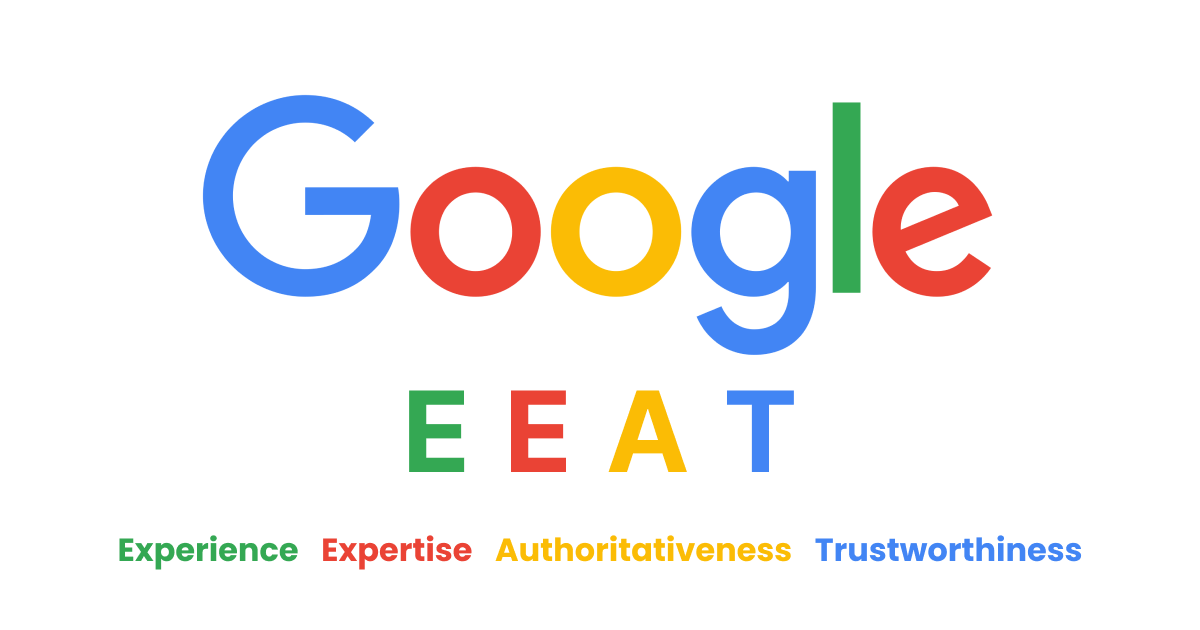
For founders, consultants, and especially LinkedIn lead generation experts, testimonials do more than build social proof—they fuel conversions. They give your cold outreach more weight. They make your profile stickier and more engaging. And they serve as trust signals that nudge skeptical buyers closer to a “yes.”
The takeaway?
On LinkedIn, a few powerful client testimonials can drive more profile views, improve response rates, and help close high-ticket deals. It’s not just about being visible; it’s about being believable.
What Makes a LinkedIn Testimonial Actually Convert
Not all testimonials are created equal. A generic “John was great to work with” might sound polite, but it won’t move the needle.
If your goal is to turn LinkedIn profile views into leads or booked calls, your testimonials need to be specific, results-driven, and rooted in real context.
A high-converting LinkedIn testimonial answers three key questions:
- What was the challenge?
- What did you do?
- And what changed as a result?
That’s why the most impactful testimonials often follow a simple three-sentence format:
- Context – what the client needed or hired you for.
- Results – what measurable outcome or transformation occurred.
- Recommendation – a direct endorsement of working with you.
Here’s what that looks like in practice:
“We hired Alex to optimize our outbound strategy. Within two weeks, we booked 32 qualified sales calls—more than we had in the previous two months. If you need a LinkedIn lead gen expert who delivers fast results, Alex is your person.”
Let’s break down what makes that testimonial effective:
- It names a tangible result. No vague “great service”—it gives you numbers.
- It’s clear about the engagement. You know exactly what Alex did.
- It feels authentic. The language sounds like something a real client would write.
Dos and Don’ts for Writing Effective LinkedIn Testimonials
A great LinkedIn testimonial isn’t about sounding perfect, it’s about sounding real and results-focused. When your recommendations tell a compelling, measurable story, they don’t just build trust, they help convert strangers into clients.
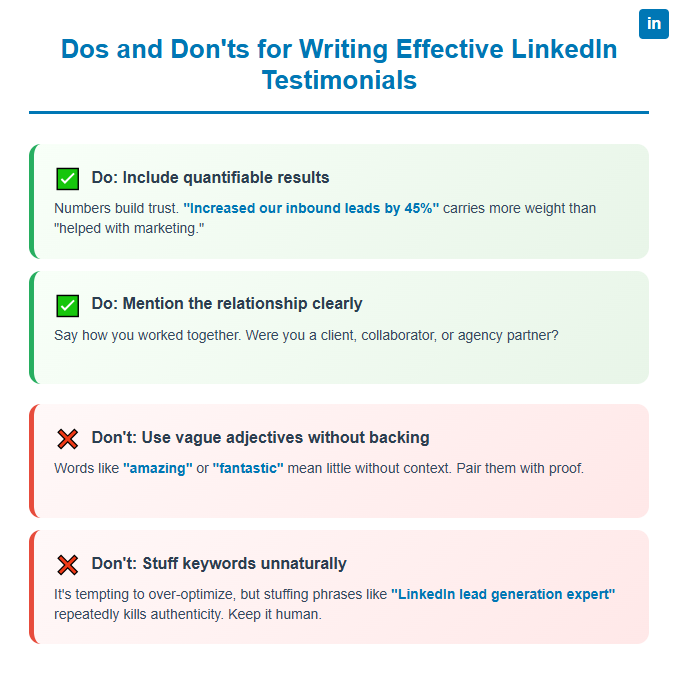
High Converting LinkedIn Testimonial Examples
When it comes to LinkedIn, how a testimonial is written matters just as much as what it says.
To help you create (or request) testimonials that actually drive leads, we’ve broken this section into three types—each with real-world style examples, expert insights, and quick usage tips.
A. Client to Agency/Service Provider Testimonials
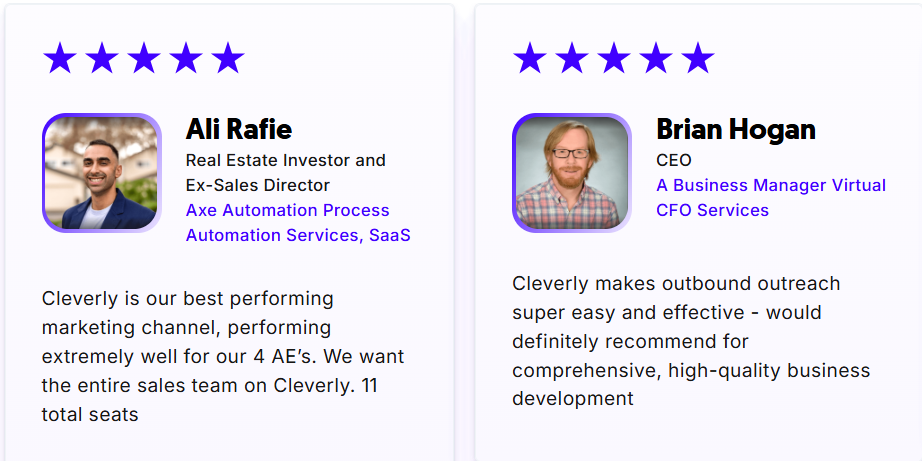
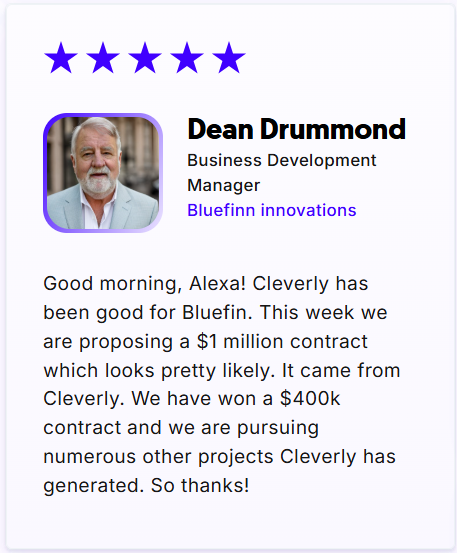
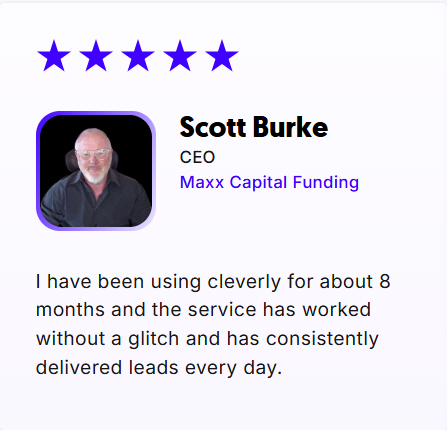
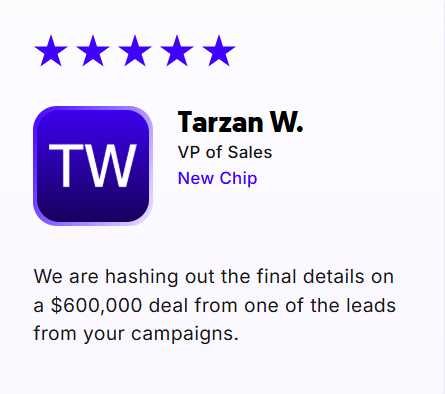
Why it works: Specific timeline + quantifiable results + clear callout of service delivered.
Use this in your profile’s “Featured” section or case study highlight.
B. Peer to Peer / Team Testimonials
Example:

Why it works: Strong founder pain point + immediate ROI.
Use this in cold outreach as a credibility snippet.
C. Founder or Team Praise from Clients
Example:
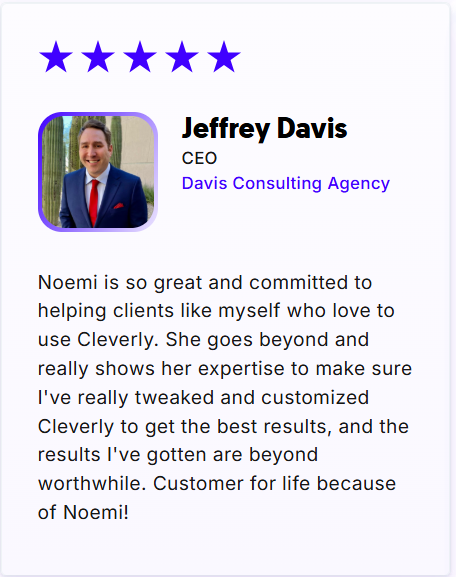

How to Ask for a High-Impact LinkedIn Testimonial
Even the best testimonials don’t appear on your profile by magic—you’ve got to ask for them. The good news? Most happy clients are more than willing to write you one… they just need a little guidance.
Timing Is Everything
The best moment to ask for a LinkedIn testimonial is right after a win—when a project wraps up successfully, a campaign outperforms expectations, or your client expresses how happy they are. Strike while the results (and emotions) are fresh. That’s when people are most likely to give genuine, enthusiastic feedback.
How to Ask Without It Feeling Awkward
Don’t overthink it. Asking for a LinkedIn recommendation doesn’t have to feel like a big deal—it’s a natural step in a successful professional relationship. Just keep it friendly and simple. Here are a few message templates you can copy and use:
📩 Template 1: Casual and Direct

📩 Template 2: Framing the Ask with Value

📩 Template 3: For Long-Term Clients or Retainers
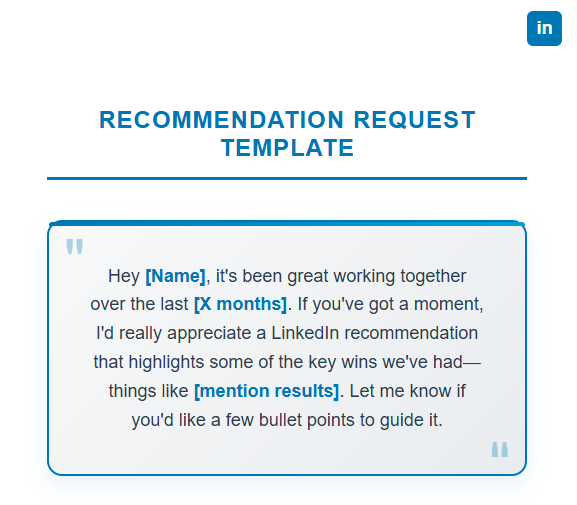
Help Them Frame It (So You Actually Get What You Need)
Here’s the thing, even great clients struggle to know what to write. By suggesting a simple structure, you make it easier for them and increase the odds of getting a testimonial that actually helps convert.
You can say something like:
“If it’s helpful, you can follow this format: What we worked on, the result you saw, and whether you’d recommend me.”
This makes it easy for them to respond without second-guessing what to say. And the result? You get clear, relevant, and persuasive testimonials that do the heavy lifting on your LinkedIn profile.
Remember: People want to say good things when you've delivered real value—just give them the right tools to do it.
How LinkedIn Lead Generation Agencies Can Leverage Testimonials
For LinkedIn lead generation agencies, testimonials aren’t just a pat on the back—they’re conversion assets. When used intentionally, they can turn a skeptical prospect into a qualified lead before a single call is booked.
Where to Showcase Client Testimonials for Maximum Impact
Yes, testimonials belong on your LinkedIn profile, but that’s just the beginning. Smart agencies weave them into every client touchpoint:
- Company LinkedIn page – Highlight standout quotes in the “Featured” section or as graphic posts.
- Your website – Especially on service pages and landing pages with CTAs.
- Pitch decks – Drop testimonials next to results or case study slides.
- Email signatures – A short line with a link to a full testimonial adds subtle credibility.
The idea is simple: anywhere a prospect is making a decision, drop in a testimonial that reinforces why saying “yes” is safe and smart.
Use Testimonials in Outreach for Credibility Stacking
Cold outreach is hard—but when you include a line like:
“Just helped [Client Name] book 27 sales calls in 3 weeks—happy to show you how.”
...you instantly stack credibility. A good testimonial acts like a warm introduction in a cold message. It’s proof you’re not just promising results—you’re delivering them.
Turn Testimonials into Carousel Posts and Micro Case Studies
With a little creativity, even a 2-sentence testimonial can become scroll-stopping LinkedIn content. Here’s how:
- Pull out a results-focused quote and turn it into a carousel post or quote graphic.
- Use the testimonial as the anchor for a short-form case study that tells the “before-after” story.
- Tag your client (with permission) to increase reach and authenticity.
This not only extends the lifespan of your wins—it also boosts your agency’s visibility as a results-first partner.
Make Client Wins Public (With Permission!)
One habit every lead gen agency should build: share the win. Every time a campaign crushes it, ask the client for a quick testimonial and their OK to make it public.
Frame it as a mutual win—something that builds both of your brands.
Bonus: Public testimonials create a flywheel of social proof. One client post attracts another. One win creates new conversations. And suddenly, your pipeline isn’t so cold anymore.
Align Testimonials With Your Positioning
Finally, remember this: testimonials aren’t just social proof—they’re a positioning tool. The right testimonial says, “This agency knows how to solve my problem.” It reinforces your niche, highlights your method, and pre-sells your value.
Used well, testimonials do more than validate your agency—they help convert browsers into buyers.
Conclusion
At the end of the day, LinkedIn testimonials aren’t just feel-good praise—they’re strategic assets. In a space where trust, authority, and proof drive decisions, a well-placed, well-written testimonial can do more to convert than any sales pitch.
Whether you're a solo consultant or running a full-blown LinkedIn lead generation agency, the takeaway is clear: start treating testimonials like marketing collateral.
Gather them intentionally, structure them for impact, and showcase them everywhere your prospects are paying attention.
And if you’re serious about turning LinkedIn into your most consistent lead channel, we can help.

At Cleverly, we’ve helped over 10,000 clients generate B2B leads from top-tier companies like:
- Amazon
- Google
- Uber
- PayPal
- Slack
- Spotify
… and many more.
The results? Over $312 million in pipeline revenue and $51.2 million in closed revenue—all through smart, targeted LinkedIn outreach.
If you're ready to generate qualified B2B leads through LinkedIn, click here to learn more. We’ll help you turn your profile, your testimonials, and your messaging into a powerful growth engine.
Frequently Asked Questions
1. What’s the difference between a LinkedIn testimonial and a recommendation?
They’re the same—LinkedIn calls them "recommendations," but they function as testimonials that appear on your profile.
2. Where should I display LinkedIn testimonials for the most impact?
On your profile, website, pitch decks, email signature, and in outreach messages.
3. How do I ask for a LinkedIn testimonial without sounding pushy?
Ask right after a successful project, be polite, and offer a structure or short format to make it easy.
4. What makes a LinkedIn testimonial convert leads?
Specific results, clear context, and a believable tone. Avoid vague praise—focus on outcomes.
5. Can I repurpose LinkedIn testimonials as content?
Absolutely. Use them in carousels, case study posts, or quote graphics to boost credibility.



